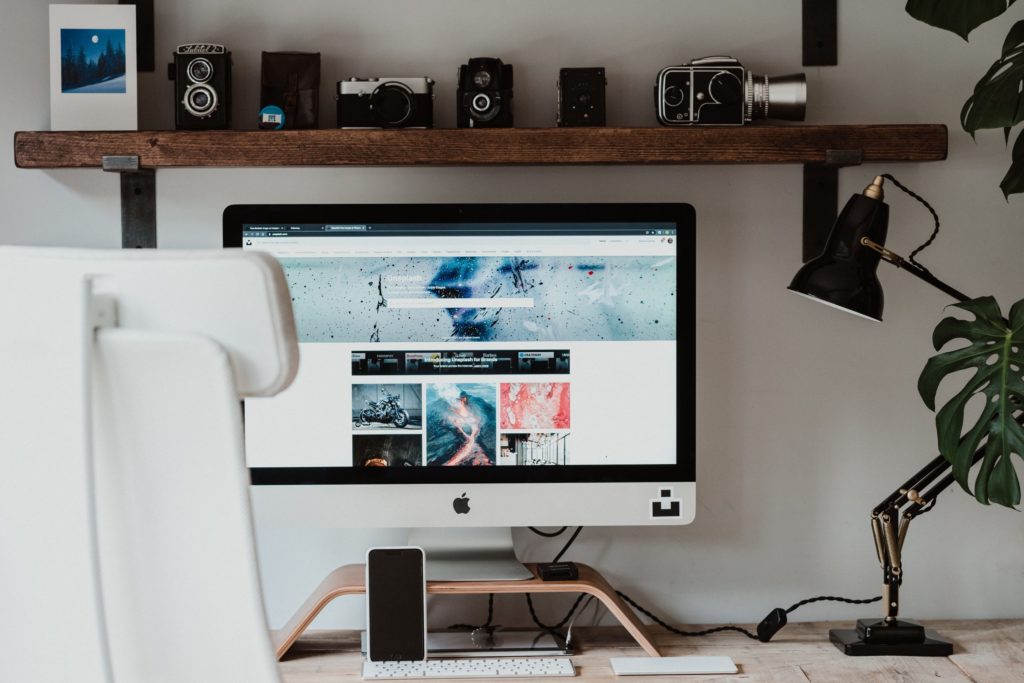
…and the IDEAL ways to fix them.
Day who knows of #wfh and do you know what? We might just be getting the hang of this. Us humans are pretty good at adapting when the going gets tough and slowly but surely, we’re wearing pyjamas at our desk a little less, we’re concentrating on work – and not Instagram – a little more, and generally, we’re reaching proper levels of productivity once again.
We might never return to the office. Because not only is working from home proven to increase productivity, but it’s also closely linked to a happier and more engaged workforce. The lack of commute, more relaxed dress code or no dress code at all (yep, we’re typing this naked), and fewer in-person distractions mean that the home office is increasingly considered a better work environment than the traditional office.
That said, remote work does have some downsides, and it’s easy to slip into negative habits if you get complacent and too comfortable. Here’s just a handful of things to keep in mind; these 4 signs you’re working from home all wrong and the IDEAL ways to fix them.
YOUR SETUP IS CAUSING BACK AND HIP PROBLEMS
You probably already know that the way you position yourself at your desk each day – and the posture an erroneously placed keyboard or screen forces you to adopt – can have serious effects on your back, neck, and spine.
An ill-fitting desk chair or a poorly positioned keyboard can cause you to hunch and can even leave you with a permanent curve in your spine. Poor posture and a sedentary lifestyle are linked with serious spinal disorders, including herniated disk and sciatica, not to mention discomfort and stiffness. They can also lead to chronic pain in the lower back, neck, and shoulders. Fortunately, there are some simple things you can do to slow or prevent these issues.
How to Fix It
- Always make sure your chair and desk are positioned to support good posture. You want your back to be straight and your lumbar to be supported.
- Make sure your feet are planted firmly, flatly on the floor or on a footrest, with your knees resting at a 90-degree angle.
- Don’t ignore the after-work pain. Consider using tools such as home massagers or laser light therapy belts to relieve the pain from a day of sitting.
- Resist the urge to hold your phone in between your ear and shoulder while you type or write. A wireless headset should be used instead.
- Use a lumbar support pillow to support your low back and prevent the spine from curving.

YOUR SCREEN IS CAUSING EYE STRAIN
Screen time takes up nearly half of our waking hours, and a large chunk of that comes from work. We still aren’t completely sure how staring at a screen all day affects our eyesight in the long term, but we do know that digital devices expose blue light, which can be damaging. In the short term, prolonged periods of staring at screens can cause eyestrain, eye fatigue, and dry eyes. And part of this may be happening due to the way your screen is positioned.
How to Fix It
- Position your screen 20 to 25 inches away from your face, with the top of the monitor slightly below eye level.
- Do not place your monitor in a place where it might reflect a strong glare from a window or bright lights. The glare can cause eye strain and fatigue.
- Make sure to go to the eye doctor routinely. Eyes worsen with age, and having the wrong prescription can cause long-term eye issues.
- Consider investing in anti-reflective lenses or blue light glasses that help prevent many of the most common issues caused by staring at a screen all day.
YOU’RE GETTING DISTRACTED BY YOUR SURROUNDINGS
Kids playing outside, your roommate blasting music, a fridge full of snacks – all of these things can be detrimentally distracting when you’re trying to get stuff done from home. And if you work in any field (hmmm, maybe the answer is working in an actual field…) that requires long periods of focus, such as reading or writing, then you risk significantly lowered productivity when there’s a constant sense of distraction in the air.

One of the most important things you can do when setting up a well-functioning home office is to banish distractions in any way you can.
How to Fix It
- Use headphones with noise-cancelling capability or listen to non-distracting music, such as classical or jazz, while you work. We find anything without invasive lyrical content is best. Just make sure to keep your headphones at a safe, healthy level to prevent ear damage.
- Hang noise-dampening curtains or shades. This will allow you to control light and sound while also preventing distractions from outside.
- Create a private, quiet space in which to work. If you need to, use a “do not disturb” sign on your door so that others know not to interrupt.
- Place your phone away from your eye line. Studies have shown that even just seeing your phone nearby can mess with your concentration.

YOU’RE NOT MOVING ENOUGH
By now, you’re probably fully aware of the many ways a sedentary lifestyle can negatively affect your health. Christ, we’ve already mentioned it in this article. Were you reading carefully enough? Let’s repeat it for those at the back; staying still can lead to potentially life-threatening conditions, including heart disease and diabetes, and it can also contribute to mental health problems like anxiety and depression. This goes for all sedentary jobs, not just those being done from home.
How to Fix It
- Take periodic breaks throughout the day to stretch for 10 or 15 minutes. Set a reminder on your phone or computer so you don’t forget.
- Take walks or jogs on your lunch break to boost energy, get your blood flowing, and enjoy some of the benefits of sunlight and fresh air.
- Use a sit-stand desk and spend part of your day working while standing up.
- Swap out your chair for an exercise ball and use it for part of the day. This can help strengthen your core and get your blood flowing throughout the day.
THE BOTTOM LINE
The first step toward improving your home office? Spend some time closely analysing your habits and workspace so that you can clearly see where improvements can be made. A few minor tweaks and upgrades can transform your inefficient, potentially damaging workspace into one that’s productive and healthy so you thrive no matter what.





